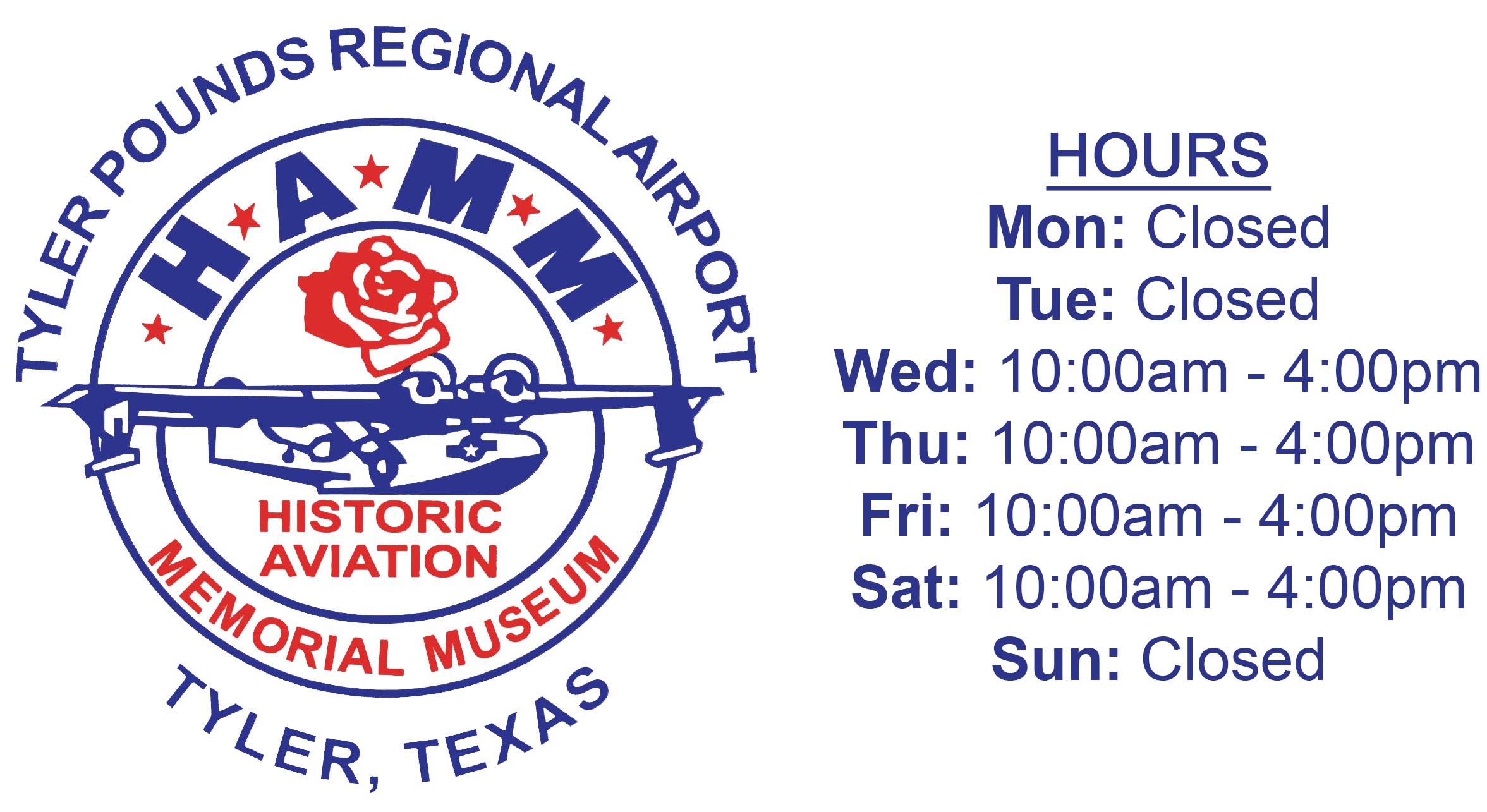Follow Us x
Mission statement
The Historic Aviation Memorial Museum pays tribute to the pioneers of flight and patriots instrumental in the advancement of aviation. This is accomplished through the display of aviation memorabilia and aircraft for the education of the public.
Board members
Effective January 1, 2023
- Ivan Vance, President
- Tommy McBride, Vice President
- Jack Downing, Vice President, Secretary
- Charles "Chip" Williams, Board Member, Curator
- Darron Jackson, Board Member
- Bob Strong, Board Member
- Michael Hilgert, Board Member
- Sam Brandon, Board Member
- Dan Cramer, Board Member
Background
The Historic Aircraft Memorial Museum (HAMM) was chartered on January 25, 1985 as the Historic Aircraft Memorial Foundation (HAMF), a Texas non-profit, tax exempt corporation.
Original goals of the Foundation included building an Aviation Hangar and Museum at Tyler Pounds Field to offer a permanent place for the display of both active and static historic aircraft and aviation memorabilia. On March 6, 2000, a simple corporate name change was requested from and approved by the Secretary of State of Texas to more fully describe the expanded mission of the organization; i.e., to present the advancement of aviation during the 20th Century through the collection, preservation and display of aviation memorabilia and aircraft for the education and benefit of the public. From then on the Tyler organization became known as the Historic Aviation Memorial Museum (HAMM).
When the HAMM hangar was first proposed in 1985, it was designed to house a PBY-6A restored by the Lone Star Wing of the Confederate Air Force. Tragically the PBY flying boat crashed in Laguna Madre off Padre Island, Texas. That same year construction was put on hold following the PBY-6A accident. However, in the interim, a ground lease was obtained at Tyler Pounds Field, a slab and foundation were poured and extensive excavation and grading were done on the site.
In 1995 the Foundation was reorganized and new goals were set. The scope of the museum was enlarged to include the history of aviation including all developments of the 20th Century, and a plan for phased construction emerged. The first three phases consisted of constructing a 2,000 square foot Exhibits Hall to house aviation memorabilia that were starting to come in, a 2,000 square foot Multipurpose Hall to house our library, office, and meeting area, and a 13,000 square foot hangar. A hangar dance was held at Pounds Field with "big band" music, World War II airplanes, and displays; proceeds from the dance were used to construct the facility. This facility is regularly used for monthly meetings of the Museum organization and serves as headquarters for special events. The hangar continues to be our restoration area along with hangar space for the flying aircraft. The Exhibit Hall was moved to the North Terminal Building as of early July 2007.
In 2006, the museum entered into an agreement with the city of Tyler to occupy the North Terminal Building which is the former airline terminal. The building was built immediately after World War II and reflects the architecture of the period. The agreement was finalized in early 2007 and we completed our move to the terminal building by early July 2007. This wonderful expansion opportunity enabled us to more than double our exhibit space, enlarge our gift shop and library, add a multimedia theater room, and provide additional educational programs.
Members of HAMM are strong advocates of aviation education. The group sponsors historical aviation programs and displays for civic organizations and schools. An occasional "Fly-In" sponsored in part by HAMM provides a large group of youngsters with their first flight in small aircraft. It is believed that this experience will remain with these young people all of their lives and may be instrumental in leading many of them into aviation related careers. "Traveling Displays" are presented at various schools, hospitals, and civic group meetings throughout the year in the East Texas area as requested by these organizations. The museum's lobby and media room are available to rent for meetings or catered luncheons.
Please contact us for more information.
Why An Aviation Museum...
The museum will honor the millions of patriotic men and women who have distinguished themselves in aviation in all branches of the military as well as civilian aviation. The museum will also salute the vast technological achievements that have made American air power the most formidable on earth. In less than 100 years, air and space power have changed the face of the world. This memorial will:
- Recognize the aviation pioneers of yesterday
- Serve as a tribute and source of pride for those serving their country and pioneering aircraft for personal and military use
- Help ensure future generations will proudly recognize the aviation advancements of Texans and the citizens of our nation
- Ensure that the aviation history of the 20th Century and beyond is not forgotten


